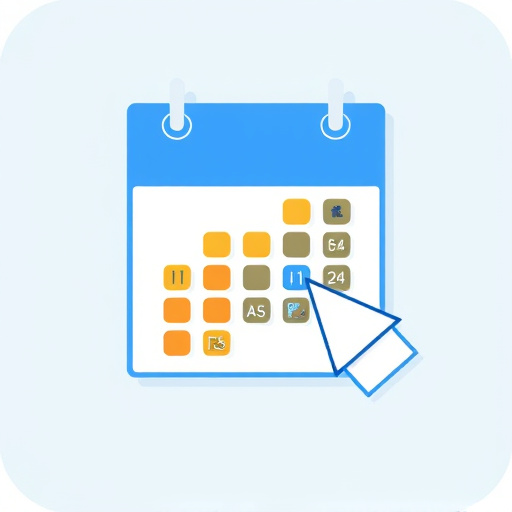Automating RTO appointment scheduling enhances operational efficiency and student experience through Registered Training Organisation calendar syncing. By integrating software with RTO calendars, errors are reduced, availability is accurate, and resources are optimized. Ideal tools offer automated booking, real-time checks, and personalized communication. Implementation success is measured via KPIs like attendance rates and student satisfaction. Seamless integration with calendar apps like Google Calendar further enhances convenience for all participants.
Automate RTO Appointment Scheduling for streamlined learning experiences. In today’s fast-paced world, efficient appointment management is key to success. For Registered Training Organisations (RTOs), effective RTO appointment scheduling goes beyond simplicity; it’s about enhancing student satisfaction and operational efficiency through automated calendar syncing. This comprehensive guide explores the challenges of manual scheduling, highlights the benefits of automation, offers tool selection strategies, provides implementation tips, ensures seamless calendar integration, and measures success for your RTO.
- Understanding RTO Appointment Scheduling Challenges
- Benefits of Automating Calendar Syncing
- Choosing the Right Automation Tools
- Implementing Automated Scheduling Systems
- Ensuring Seamless Integration with Existing Calendars
- Measuring Success and Continuous Improvement
Understanding RTO Appointment Scheduling Challenges

Automating RTO appointment scheduling can greatly streamline operations for both training providers and students. However, navigating the challenges inherent in this process is crucial. One of the primary hurdles is achieving seamless Registered Training Organisation (RTO) calendar syncing across various platforms and systems. Manual coordination between different RTOs, instructors, and trainees often leads to errors, double-bookings, and missed appointments.
Additionally, managing scheduling conflicts, especially when dealing with multiple locations, specialized courses, and variable availability, can be complex. Effective automation must account for these dynamics, ensuring a user-friendly experience that reflects real-time availability accurately. By overcoming these challenges through efficient RTO calendar syncing technologies, organizations can enhance operational efficiency, improve student satisfaction, and ultimately foster better learning outcomes.
Benefits of Automating Calendar Syncing

Automating Registered Training Organisation (RTO) appointment scheduling through calendar syncing offers a multitude of benefits that streamline operations and enhance student experiences. By integrating scheduling software with existing RTO calendars, institutions can bid farewell to manual data entry and reduce human error. This seamless sync ensures that all appointments, including training sessions, assessments, and reviews, are accurately reflected across multiple platforms, providing a comprehensive view for both staff and students.
Furthermore, automated calendar syncing allows for efficient resource allocation. It enables RTOs to quickly identify available slots and facilitate scheduling without back-and-forth communication, saving valuable time. This efficiency is particularly beneficial in dynamic training environments where flexibility and rapid adjustments are crucial. Students, too, benefit from a streamlined process, receiving timely reminders and having access to their schedules at all times, fostering better engagement and attendance.
Choosing the Right Automation Tools

When automating RTO appointment scheduling, selecting the right tools is paramount. The ideal solution should seamlessly integrate with your existing systems, such as a Registered Training Organisation (RTO) calendar syncing platform, to ensure a smooth and efficient workflow. Look for features like automated appointment booking, real-time availability checks, and personalized communication tools that can enhance student engagement.
Choosing the right automation tools involves evaluating their scalability, compatibility, and user-friendliness. Consider tools that offer intuitive interfaces and robust reporting capabilities, enabling you to track appointments, analyze trends, and make data-driven decisions. With the right software in place, RTOs can streamline their scheduling processes, reduce manual effort, and improve overall operational efficiency.
Implementing Automated Scheduling Systems

Implementing automated scheduling systems for RTO appointment scheduling offers a transformative solution in the educational sector. These cutting-edge tools sync seamlessly with a Registered Training Organisation’s (RTO) calendar, revolutionizing the traditional manual planning process. By automating this task, RTOs can bid farewell to tedious manual entry and embrace an efficient, error-free approach.
With automated scheduling, teachers and administrators gain valuable time for content development and student support. The system allows for real-time availability updates, ensuring accurate reflection of faculty schedules. Moreover, it facilitates seamless collaboration among departments, fostering a well-coordinated learning environment.
Ensuring Seamless Integration with Existing Calendars

One of the key benefits of automating RTO appointment scheduling is the seamless integration with existing calendars. This ensures that training sessions and assessments are directly synced with attendees’ personal or professional calendars, eliminating the hassle of manual updates. With calendar syncing, individuals can effortlessly view and manage their RTO appointments alongside other commitments, fostering a more organized and efficient workflow.
The process typically involves utilizing APIs (Application Programming Interfaces) to link the RTO scheduling system with popular calendar applications such as Google Calendar, Outlook, or Apple Calendar. This two-way syncing ensures that any changes made in one calendar are reflected in the other, minimizing errors and maximizing convenience for all participants.
Measuring Success and Continuous Improvement

Measuring success is a critical aspect of RTO appointment scheduling automation. Key performance indicators (KPIs) like appointment attendance rates, on-time starts, and student satisfaction scores help gauge the effectiveness of the automated system. By tracking these metrics over time, RTOs can identify trends and areas for improvement. Continuous improvement ensures the scheduling process remains efficient and tailored to students’ needs.
For instance, successful implementation might involve seamlessly integrating a registered training organisation’s (RTO) calendar syncing capabilities with existing software, reducing manual effort by 90%, and increasing on-time starts by 15%. Regular reviews of these KPIs allow for iterative adjustments, fostering a dynamic and responsive scheduling environment that keeps pace with evolving student demands and market trends.
Automating RTO appointment scheduling offers significant advantages for both training providers and participants. By streamlining calendar syncing processes, automation reduces manual errors, saves time, and enhances overall efficiency. Choosing the right tools and ensuring seamless integration with existing calendars is key to successful implementation. Continuously measuring success and making improvements will help organisations keep up with evolving demands and stay competitive in the education landscape, particularly regarding Registered Training Organisation (RTO) calendar syncing.
